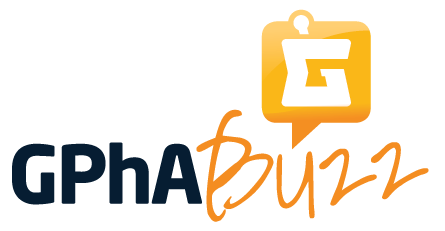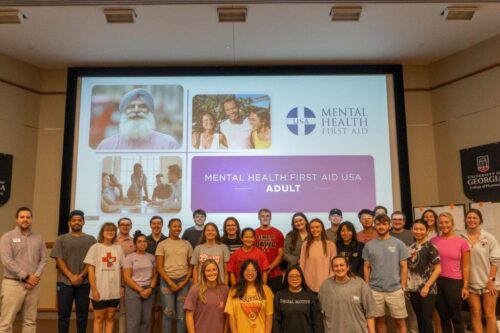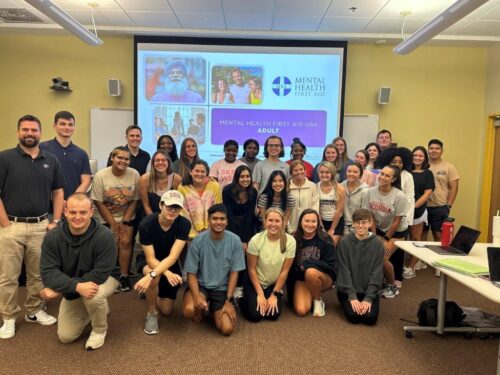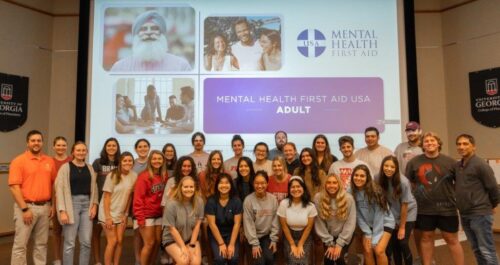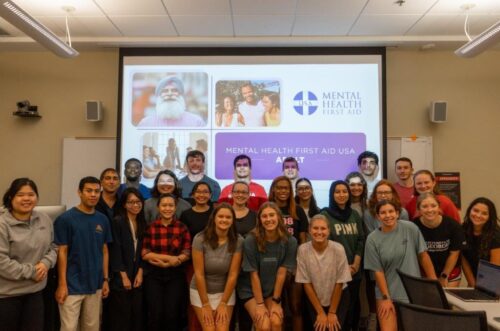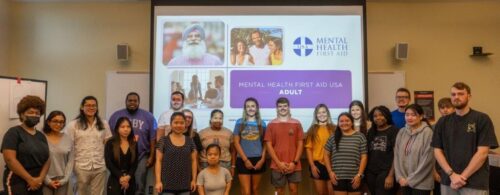September 01, 2023 ✒ Andrew Kantor
It’s a long time coming, but the HHS has finally asked the DEA to move marijuana from Schedule I to Schedule III — i.e., from “high risk of abuse and no medical use” to “available with a prescription.” Currently (as you’ve probably heard) pot is considered as dangerous as heroin or LSD — and more dangerous than fentanyl or meth. Something ain’t right*. If the DEA agrees, it won’t make marijuana legal, but it will make it a lot easier for researchers to research, and for marijuana businesses to operate (and generate that sweet, sweet tax revenue). * This is not an official position of the Georgia Pharmacy Association, its staff, or its members. Narcan being available over the counter starting next month is good news … at least for those who can afford the $45 price tag. (Somehow it seems that the people who need it most might not be able to.) And government and harm-reduction groups? They’ll get a big ol’ $4.00 discount. What about insurance? So far only Blue Cross Blue Shield of Massachusetts has said it will cover OTC Narcan — even better, with a $0 copay. But note the word only; currently BCBS-MA stands alone. Side note: 18% of people with an opioid problem are uninsured, per KFF. Other side note: That $45 spray contains two doses, and potent opioids like fentanyl sometimes require more. As stimulants remain in shortage, a small bit of relief appears: The FDA has approved a bunch of generic versions of Vyvanse. The now-approved generics range in dosage from 10 mg to 70 mg and come in capsule and chewable forms. Manufacturers such as Teva, Sun Pharmaceutical, Actavis, Mylan, Hikma and others have cleared the agency’s regulatory bar with their generics. Note: Those companies have had their generics approved, but they haven’t said if or when they’ll actually ship. HIV patients have to take antiretroviral therapy (ART) for their entire lives because the virus has a nasty habit of hibernating and coming to life the moment the ART stops, because the therapy only suppresses the virus. But now Aussie researchers have made an interesting breakthrough. They found a drug that can keep those hibernating virus cells dormant a bit longer — two weeks. It may not sound like a lot, but the fact that it does even that means there might be a way to put a (metaphorical) wooden stake through the heart of the hibernating virus. Oh, and the drug? Venetoclax — the blood cancer med that’s already FDA approved. “In attacking dormant HIV cells and delaying viral rebound, venetoclax has shown promise beyond that of currently approved treatments.” Next up: Testing it against HIV outside the lab on some of those shifty Danes. The Swedes have proven it once and for all: Modern, NOAC blood thinners like Eliquis “reduce the risk of serious bleeding by up to 45 percent” compared to warfarin. Heck, compared to rivaroxaban (aka Xarelto), too. Of course some patients need warfarin, but it’s worth checking whether there’s a better option. When you’ve got yourself a bit of a buzz and suddenly decide to approach that hottie across the room, is that because of “beer goggles” or “Dutch courage*”? For reasons we cannot possibly fathom, researchers at Stanford Medicine decided to find out. The answer: It’s courage, not goggles. Whether or not participants were intoxicated had no effect on how good looking they found others. […] However, drinking did affect how likely the men were to want to interact with people they found attractive. * I cleared the use of this phrase with a Dutch friend. 👍Beer goggles debunked, pot could be rescheduled, generic Vyvanse is coming, and more
HHS: It’s time to make marijuana C-III
The price of OTC Narcan
Vyvanse goes generic
A step to an HIV cure
Eliquis beats warfarin
I can see clearly now

August 31, 2023 ✒ Andrew Kantor
In response to the ongoing shortage of cancer drugs, the FDA is allowing imports from companies such as China’s Qilu Pharmaceutical, which isn’t FDA approved. That’s good news for cancer patients … almost certainly. But a bipartisan group of Georgia’s federal congressfolks wants the FDA to be more transparent about the whole deal and have written a letter to FDA Commissioner Robert Califf. [W]e are concerned by the lack of transparency from the FDA about these suppliers, especially since the FDA has begun importing cisplatin injections from Qilu Pharmaceutical, which is not FDA-approved and manufactures the injections in China. We are also alarmed by the lack of timeline and detail on when any new, safe imports of carboplatin will begin and from where they will be imported. The issue is that at the moment Americans can’t both have the drugs we need and guarantee they meet US standards; both are out of government hands. Too many plants have shut down or failed inspections, and as the AJC article pointed out: A major part of the problem is that many of these drugs may be useful, but are generic and so have a low profit margin […] So private drug companies don’t prioritize making them like patients and doctors prioritize wanting them. Click here for the full letter (PDF). Georgia is one of the states where Walmart is looking to cut its pharmacists’ hours in order to reduce costs. “For example, a pharmacist could go from an 80-hour, two-week pay period to one lasting 64 or 72 hours,” Reuters reports. New weight-loss drugs are incredibly popular, but they’re actually a net loss for the company, meaning the pharmacy business isn’t making as much money. At a meeting in May, senior Walmart field leadership asked 20 market leaders — directors of 10 to 15 stores in a given area — to start asking pharmacists to voluntarily reduce their base salary hours, the source told Reuters. Walmart says the cuts are due to decreased prescription volume during the summer, and a desire to give pharmacists better work-life balance. (APhA CEO Michael Hogue pointed out that ‘there was no data to support the assertion that demand for medications falls during the summer.’) Walmart’s total revenue in the second quarter of this year was $152.9 billion, up 8.4% over the same quarter last year. AmerisourceBergen now identifies as “Cencora.” The company’s pronouns are it/its. Proton-pump inhibitors are already on the “Are You Sure You Want to Use These?” list, and now there’s another reason to be careful: Kids who use PPIs might find themselves with serious infections anywhere from 4 months to 2 years after they stop using them. French researchers found that…. Among children who used PPIs rather than another acid suppressant, there was an overall higher rate of serious infections that required hospitalization. There were higher rates of infections in the digestive tract; the ear, nose, and throat; the kidneys or urinary tract; the lower respiratory tract; and the nervous system. They’re careful to give the common caveat: Their study showed correlation, not causation; it could be that kids who needed PPIs are just sicker in general. But still they recommend that “PPIs should not be used without a clear indication.” Statins work against LDL cholesterol, but not all LDL — they don’t affect lipoprotein(a), which is caused by genetics, not diet. There’s no way to treat Lp(a). Until now … maybe. Aussie researchers say they’ve completed a trial of a drug called Muvalaplin: “the first oral drug ever developed to target Lp(a) — effectively lowering levels by up to 65 percent.” Bonus: Includes “game changer.” A vaccine against heroin and fentanyl overdoses is about to start its phase 1 human trials. “Our vaccines are designed to neutralize the target opioid,” said one of the University of Montana researchers leading the effort, “while sparing critical medications such as methadone, buprenorphine, naltrexone and naloxone.” What’s not clear is whether this is a lifetime vaccine, a once-a-week shot, or something else. Even the researchers aren’t sure: “We will also follow the patients to evaluate how long the antibodies against opioids will last.” If you can’t kill ’em, convert ’em. That’s the logic behind the method developed by scientists at New York’s Cold Spring Harbor Laboratory. It can turn sarcoma cells “into regularly functioning tissue cells.” (They’re specifically looking at rhabdomyosarcoma, a nasty pediatric cancer.) Using a technique they invented, the researchers were able to find genes within the cancer cells that, when disrupted, allowed those rhabdomyosarcoma cells to turn back into muscle cells. Then they found the specific protein involved. Stopping production of that protein, called NF-Y, turned the cancer from Hyde to Jekyll. And the technique, they say, “can allow you to take any cancer and go hunting for how to cause it to differentiate.”Walmart’s pharmacy cuts, why PPIs and kids don’t mix, opioid vax in the works, and more
Georgia lawmakers to FDA: What’s with the cancer drugs?
Walmart looks to cut pharmacist hours
Please make a note of it
PPIs aren’t for kids
A drug for genetic cholesterol
Overdose vaccine nears human trials
Cancer conversion therapy
August 30, 2023 ✒ Andrew Kantor
CMS has released the list of the first 10 drugs that it’s not going to pay whatever the drug companies demand — these are the meds it’s going to negotiate the prices of. The list: You know the drill: Drug companies say having to negotiate prices will be the end of the world as we know it, CMS says this is how capitalism works, yada yada yada. Why it’s a big deal: Medicare, i.e., taxpayers, spent $50.5 billion on these drugs in just one year. And while Medicare Part D covers hundreds of drugs, these 10 alone accounted for 20% of spending. (A quick poll of the Buzz offices puts our bet on the courts siding with the pharma companies and saying CMS can’t negotiate prices — ‘If Congress wants to allow drug-price negotiation, it needs to change the law.’ But who knows?*) * The Shadow. The Shadow knows. Pfizer thinks its tornado-damaged North Carolina facility can start cranking out drugs in the fourth quarter. Parts of that plant have already reopened, and the company has secured storage space to replace what was destroyed in July. Did you know that — despite the fact that they cut the risk of breast cancer recurrence by half (!) — something like 40% of breast cancer patients don’t take their drugs after treatment? It’s not entirely the cost. By pretty much stopping estrogen production, these drugs can bring a host of side effects “including weight gain, sexual side effects, joint pain, depression, and sleeplessness,” as University of Colorado research found. Education alone didn’t help adherence. Cutting the cost did (e.g., requiring insurers to cover the costs), as did treating patients’ depression and reminding them of their motivations for living longer. But perhaps most important is making sure healthcare providers are aware that adherence is such a big issue. The Drug Supply Chain Security Act — aka “track and trace” — was supposed to take effect on November 27, but the FDA, under pressure from groups including the APhA, NACDS, and NCPA, has agreed to delay enforcement for a year, until November 2024. Those groups wanted enforcement to wait till February 2026, but the FDA was, like, ‘We literally told you about this 10 years ago.’ UC Irvine experts* warn that using drugs like Ozempic or Wegovy to treat childhood obesity is probably not a good idea, or at least has to be monitored very carefully. “Our major concern is the unbalance and inappropriate reductions in calorie or energy intake associated with these weight loss drugs. Unlike in adults, children and adolescents need energy and sufficient calories not only for physical activity but for growth and development.” * “a team of clinicians, exercise scientists, pharmaceutical scholars, ethicists and behavioral experts” Researchers at the University of Manitoba wondered if cannabis was safe and effective for kids, so they looked at the existing studies. The answer they found is that we just don’t know. [The analysis] found the evidence just isn’t there to determine dosing, safety and efficacy of medical marijuana or cannabis-containing products for managing symptoms experienced by these kids. It seems that marijuana is helpful fighting nausea, but “Data are lacking on cannabinoids’ effects on pain, mood, sleep, and health-related quality of life.” If we’re going to start using cannabis-based drugs, they say, more research is needed to look at dosing, side effects, and tolerance. For older folks, sleeping in a room between 68° and 77° gives the best sleep quality — so says a study out of Harvard’s Hinda and Arthur Marcus Institute for Aging Research. Higher than that and any normal person will be uncomfortable, lower than that and seniors might feel like they’re in a morgue. Avoid Ozempic for kids, CMS lists first negotiable drugs, track and trace delayed, and more
The first 10 drugs to be negotiated
Pfizer plant update
Breast cancer patients skip their drugs
Track ’n’ trace delayed a year
Will someone think of the children?
Are GLP-1 inhibitors safe for them?
What about cannabis-based drugs?
How Goldilocks’s grandma sleeps
August 29, 2023 ✒ Andrew Kantor
It’s been known for a while that diabetes can mean a guy has a bit of, er, trouble in the bedroom. In other words, erectile dysfunction is not an uncommon side effect for older diabetics. The twist: It seems that can work two ways. Finding ED in a younger guy (one under 40) could well be an indicator of undiagnosed prediabetes or type 2 diabetes. That’s what researchers at Saint Louis University* found after reviewing the health data of 2 million patients. The study found that ED patients have a 34% increased risk for prediabetes or type 2 diabetes. Additionally, 75% of patients developed prediabetes or type 2 diabetes within a year of ED diagnosis. Now might be the time to think of how comfortable you are having certain conversations with your patients. * Apparently the only university with a billikin as a mascot. GPhA’s VP of AIP* Jonathan Marquess was featured on Atlanta’s WSB-TV news talking about the Covid-19 resurgence that no one wants … but that we’re stuck with. Hope you didn’t throw out your masks. Covid test sales, he says, are up 200% in the last couple of weeks, and as he owns 18 pharmacies, Marquess oughta know. * Academy of Independent Pharmacy — if you don’t know it now, you will when you buy your first pharmacy. It might do preemies good to get some fatty acid supplements — specifically omega-3 and omega-6. The kids who had those added to their diets had better vision by the time they were about 2½. Those supplements are sometimes given to preemies at risk of retinal issues, but the new study finds that they seem to help with vision beyond just protecting the retina. As the lead researcher put it, “The supplement also seems to have improved the brain’s ability to interpret visual impressions.” Do you know someone ready to lead one of the nation’s most respected pharmacy advocacy organizations? If you or someone you know is the right kind of person to take on the reins of the Georgia Pharmacy Association, we want to hear from you. This is a paid staff position, working out of our Sandy Springs headquarters and working with the president, the board of directors, GPhA staff, and most importantly our members and partners to guide the association and support the pharmacy profession in Georgia. Get the details — requirements, benefits, duties, and how to apply — at GPhA.org/ceo. More info keeps coming out that Parkinson’s likely starts in the gut, although the details are still being sussed out. New research out of the Mayo Clinic has added an interesting piece to the puzzle. What the Mayoians found was that there are four gut conditions that were associated with an increased risk of Parkinson’s but not with other neurological conditions. Three of them seemed to almost double that risk: The other, irritable bowel syndrome without diarrhea, was associated with a 17% increase in risk. Associated is the operative word here because they haven’t figured out why there’s a connection, just that there is one. And here’s another interesting tidbit: “Interestingly, the removal of the appendix was found to be protective against PD, prompting researchers to question its potential role in the disease process underlying the condition.” Facing more than 1,000 lawsuits related to its part in the opioid crisis, and already $3.3 billion in debt, Rite-Aid is apparently preparing to file for Chapter 11 bankruptcy. If you like smoothies, you’ve probably patted yourself on the back for being so health conscious. Good for you! But are you sure you’re getting all the nutrition you should out of them? Some fruits — those that brown in the air, like apples and bananas — contain polyphenol oxidase (PPO), which turns out to reduce the amount of flavanols in smoothies. And you want those flavanols. In fact, found UC Davis researchers, it’s a pretty big effect: The researchers found that those who drank the banana smoothie had 84% lower levels of flavanols in their body compared to the control. Their recommendation: If you’re gonna add bananas or apples to a smoothie, don’t mix them with berries, grapes, or cocoa because they’ll undo the benefits those flavanol-rich foods provide.Covid-test buying spree, ED can mean diabetes, how to ruin a smoothie, and more
The ED – diabetes connection
Covid tests get hot
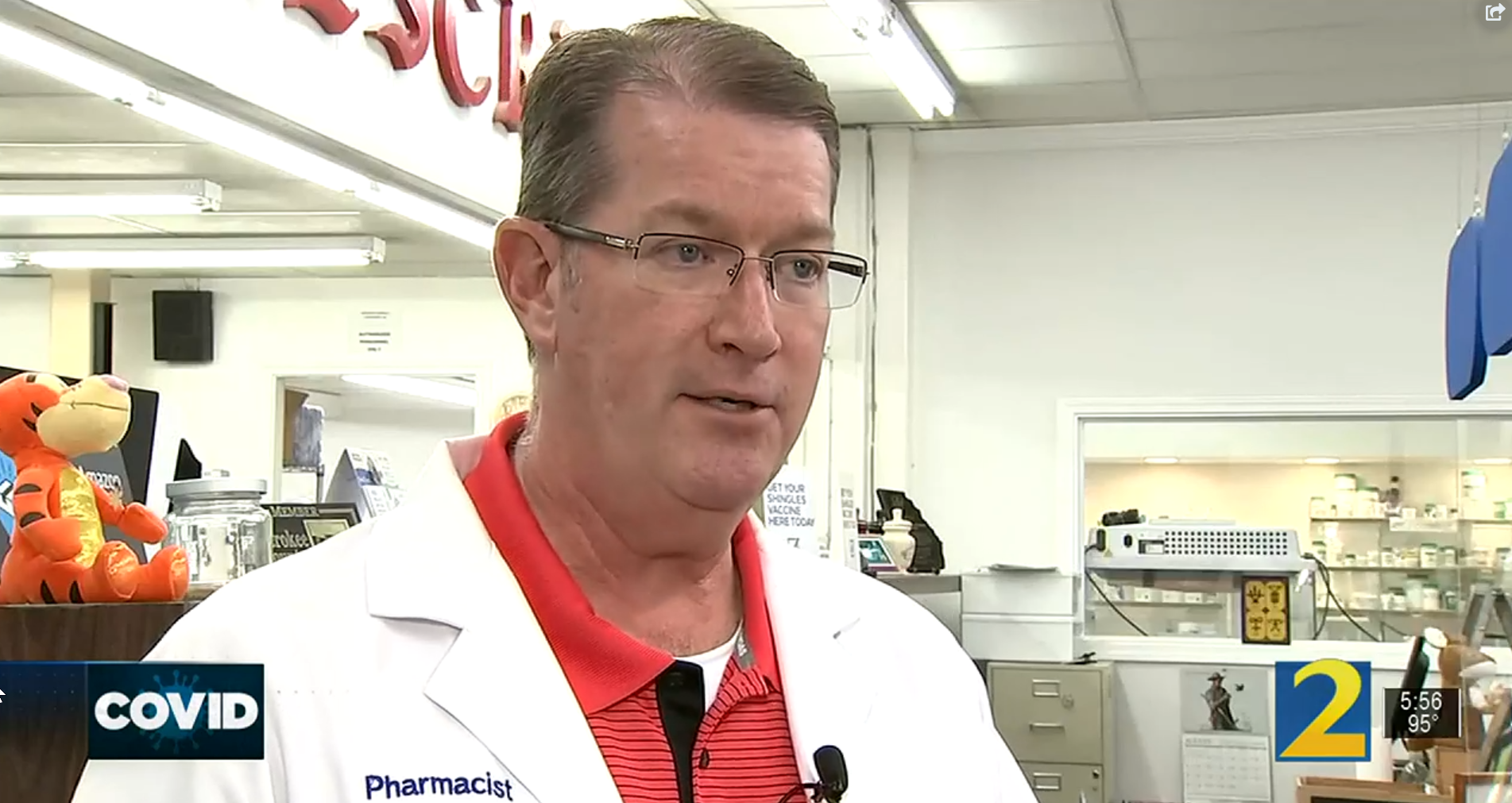
Related
Omega for preemies
GPhA is looking for a new CEO

The four gut conditions connected to Parkinson’s
ICYMI: Rite-Aid waves white flag
A smooth non-pharma story

August 26, 2023 ✒ Andrew Kantor
Since the passage of the 21st Century Cures Act in 2016, the FDA has been approving drugs, especially cancer drugs, faster — that was the idea. But it’s also been relying on less data to do that, or it’s not sharing that data with the public as it should. That’s the conclusion of researchers at Stanford and Oregon State universities, who examined FDA approval data from 2017 and 2022. One interesting tidbit they found: Although drug companies conducted an average of 5.8 studies per drug, approval was based on 1.4 studies. For many drugs that have been tested in multiple clinical trials, pharmaceutical companies are only required to share the results from two trials, leaving questions about why they chose those two for submission and what happened in the other trials. The other info is sometimes made publicly available later, but not always, despite the fact that “Everything is supposed to be transparent with this FDA process.” A new study out of Kansas City (MO) found that semaglutide https://www.theguardian.com/society/2023/aug/25/weight-loss-drug-semaglutide-reverses-heart-failure-symptoms-study. And it’s not just by helping them lose weight. The medication “produced large improvements in symptoms, physical limitations and exercise function, reduced inflammation, and resulted in greater weight loss and fewer serious adverse events as compared with placebo”. An expert panel has published the first clinical guidelines for treating acetaminophen poisoning. “They recommend an acetylcysteine regimen of at least 300 mg/kg during the first 20 to 24 hours” as well as reassessing patients after the first round of treatment rather than just sending them home. Not-so-fun fact: “More than 80,000 cases involving an acetaminophen product were reported to U.S. poison control centers in 2021.” A Stanford professor’s company has bioengineered yeast to make drug ingredients. And they make them a heck of a lot faster than the current ‘grow them in fields’ method. It’s not just in the lab, now — it’s actually producing ingredients at industrial scale. Last week… … the company announced it has completed its first commercial-scale fermentation run, which resulted in the production of 116,000 liters of thebaine, a key ingredient for several essential drugs. And rather than a turnaround time of a few months, Antheia made the chemical in about five days. Nor is it a one-trick pony. Antheia has more than 70 other ingredients in its pipeline for different types of drugs, including oripavine (for pain-management drugs) and scopolamine (anti-nausea). If you have older mice suffering from hearing loss, there’s some potentially good news out of Argentina. It seems that one of the cause of hearing loss is a lack of cholesterol in the inner ear. (Who knew?) Pharmacology researchers in Argentina figured if you could increase that ear cholesterol, the amplification cells could get better at their job. They decided to use phytosterols — plant-based compounds similar to cholesterol — because they can cross the barrier into the brain. And what d’ya know, it worked. The mice who got phytosterols saw their hearing improve. And guess what? Phytosterols are available as OTC supplements. But before you rush to stock ’em, keep in mind that this is just a lab-based experiment. More trials will be needed. Brown U researchers connected a computer to the brain of a woman with ALS — she cannot speak or even use the muscles in her mouth — and typed out her thoughts at 62 words per minute. (No, Mr. Policeman, it doesn’t read her mind. She has to deliberately think as if she’s saying the words, and an AI processes her neural activity.) We told you back in 2021 not to kiss your pet turtles. And yet here we go again — this time with baby turtles. [J]ust because a turtle has a shell that’s over four inches long doesn’t mean that you can start nuzzling with the turtle or sharing noodles with the turtle à la “Lady and the Tramp”.OTC hearing supplement, brain-typing breakthrough, yeast making meds, and more
Lowering the bar for drug approvals
Semaglutide’s next trick
Treating Tylenol poisoning
Yeast makes drugs (and she made the yeast)
A supplement for hearing loss?
Non-pharma cool health stories
Wild medical science marches on
Turtle danger, redux

August 25, 2023 ✒ Andrew Kantor
CVS Health has partnered with Novartis to produce a biosimilar of Humira, which it says it will price at 80% below Humira’s $6,922 per month price. It’s created a new company called Cordavis to do that . Other companies also make Humira biosimilars, but some of them price them close to Humira. Why? Because PBMs like high drug prices — high list prices mean high But Cordavis will price its biosimilar (“Hyrimoz”) a lot lower. Why? So CVS Caremark (the PBM) can buy it cheaply and thus offer it to CVS pharmacy patients at a low price, but without dealing with manufacturer rebates. In other words, a PBM is cutting out the middleman and making the drug itself. The world of PBMs and drug pricing (artist’s conception) At this point you’re permitted to hit yourself on the head and hope this makes sense. (It does, but only in the crazy world of PBMs.) Why else is CVS doing this? Because Mark Cuban Cost Plus Drugs is also making a Humira biosimilar, and selling it directly to patients for $569 a month. Psst! GPhA’s region meetings are coming soon — in late September for most of you. The details are still being finalized, so that’s why this is just a teaser. More details to come! The FDA says people should immediately stop using and throw out any bottles of “Dr. Berne’s MSM Drops 5% Solution” or “LightEyez MSM Eye Drops – Eye Repair” — they could be contaminated with bacteria, fungus, or both. It seems that the bacteria that causes acne and angst among teens (Cutibacterium acnes) might actually do more than ruin prom night for a few kids. UC San Diego researchers found that it does a lot to protect the skin by stimulating lipid production. We found that C. acnes induced this increase in lipid production by producing a type of short-chain fatty acid called propionic acid. Propionic acid creates an acidic skin environment that provides a number of benefits, including limiting pathogen growth, reducing staph infections and contributing to anti-inflammatory effects in the gut. In fact, they said, only this bacteria has these effects, meaning Clearasil sales are just a happy byproduct of the body protecting itself. Perhaps drug maker Exeltis figured the FDA was too old to be on social media, so it tried to slip in an ad for its Slynd contraceptive without clearing it with the agency first. That’s a no-no. And then a no-no-NO was leaving out some important info from that ad. According to the FDA, the post lacked any information about the risks of Slynd, despite the label of the oral contraceptive describing warnings and precautions related to high potassium, blood clots, bone loss, cervical cancer, and more. And a no-no-no-NO was making the info that was in the ad misleading — saying it would give women “periods on a schedule” when the company has no data to support that. And thus the FDA sent Exeltis a strongly worded letter telling it to stop doing that. Did you know that 99% of bacteria can’t be cultured? Well, couldn’t be, until a small US startup figured out how. So what? What: That means there are suddenly a lot more bacteria that can be “mined” for new antibiotics. It’s not just theory, either; for the first time, scientists were able to isolate and culture a bacteria called Eleftheria terrae in which they discovered a new antibiotic: Clovibactin. “Since Clovibactin was isolated from bacteria that could not be grown before, pathogenic bacteria have not seen such an antibiotic before and had no time to develop resistance.” Even better, Clovibactin’s mechanism is different than existing antibiotics, so, the scientists say, “bacteria will have a much harder time developing any resistance against it.” Why are drug shortages hitting so hard and so fast? FDA commish Robert Califf thinks it’s a two-pronged problem. The “fundamental problem,” to hear Califf tell it, is that “we essentially have two drug industries in the U.S.” There’s the “innovator industry,” where Califf said he thinks “the prices are too high,” and then there’s the generics industry, where “a lot of the prices are too low.” Fierce Pharma has the details. When acne is your friend, why CVS is doing biosimilars, getting yeast to make drugs, and more
CVS launches biosimilar company
kickbacks rebates.
Region meetings teaser
Eye drop warning
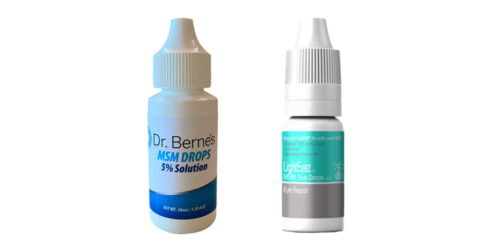
Acne bacteria is trying to do good
FDA smacks Exeltis upside the head (gently)
New bacteria, new antibiotic
The Long Read: FDA commish on shortages
August 24, 2023 ✒ Andrew Kantor
Alzheimer’s interrupts sleep, and, in a vicious cycle, less sleep can make the disease worse. One way to break that “circadian disruption” is intermittent fasting. The mice that UC San Diego researchers tested this on got the same amount of food, but it was given within a 6-hour window; they fasted for the other 18 hours. Result: they “showed improvements in memory and reduced accumulation of amyloid proteins in the brain.” Compared to control mice who were provided food at all hours, mice fed on the time-restricted schedule had better memory, were less hyperactive at night, followed a more regular sleep schedule and experienced fewer disruptions during sleep. The test mice also performed better on cognitive assessments than control mice. And it wasn’t just on the macro level — those mice also showed improvements on the molecular level. The headline ↑ almost says it all. The notable takeaways from the study out of the Albert Einstein College of Medicine: Taking immunosuppressants for the long haul — e.g., after a transplant — can increase a patient’s cancer risk, but what about short-term use? According to research out of the University of Pittsburgh and Mass Eye and Ear, it’s cool: “Relatively short-term use of immunosuppressant medications to control an inflammatory disease was not associated with an increased risk of later developing cancer.” It involved 16,000 patients over 10 years, so points for going big. Caveat: The study only looked at people with inflammatory diseases, thus “the researchers caution that the results aren’t generalizable to everyone taking immunosuppressants.” Fun fact: We still don’t know why we need to sleep. So what if we didn’t? Washington State University researchers have found a way to activate brain cells called astrocytes — once thought to do little more than glue the brain together. That allowed mice to stay awake longer without being sleepy or needing to ‘catch up’ afterward. “[W]hat we saw in this study was that despite hours of added wakefulness these mice did not differ from well-rested controls in terms of how long and how intensely they slept.” They hope they can someday translate this into drugs that can help “improve the productivity, safety, and health of shift workers and others who work long or odd hours, such as first responders and military personnel.” And, of course, students. But first they need to make sure the lack of sleep doesn’t cause other problems in mice — then they can start testing on people. Side note: Have you ever heard of the “Russian sleep experiment” where men were kept awake for 15 consecutive days? It’s an urban legend. Emory U (and friends) have scored a $24 million ARPA-H* grant to research ways to use mRNA technology to fight cancer. Of note, it’s the first grant awarded by ARPA-H, which was only created last year with the goal of accelerating medical breakthroughs the way DARPA does for defense tools. * Advanced Research Project Agency for Health You know what we really don’t need? A new tick-borne infection. And yet that’s what might be lurking out there. The CDC is investigating a small number of cases — 4 out of 30,000 — that involved a “novel Anaplasma bovis–like agent.” “This is another anaplasma that affects humans so it’s the beginning of the story that we need to learn more about.” They have no idea how big a deal this is — it might just be another similar tick-borne disease. The good news: “It’s a new species but those samples were from years ago, so it’s not an emerging infection that is now circulating.” This May, the FDA gave fast-track approval to the antipsychotic Rexulti (brexpiprazole) for agitation associated with dementia, despite health officials warning about too many off-label prescriptions for atypical antipsychotics to older patients. (Even the FDA itself warned of a significant increase in death.) But as a BMJ investigative piece points out, there’s little evidence Rexulti actually works, while that danger still looms over it. [A]mong four efficacy evaluations across the three prelicensure clinical trials, the highest efficacy observed was a 5.3 point improvement over placebo on a 174 point scale. In the two trials that assessed quality of life, no benefit for either the patient or the caregiver was demonstrated. Funny business: The efficacy tests used to get approval showed not effect on US patients, but a significant bigger effect on eastern European and Spanish patients, which one researcher called “implausible.” Should Rexulti have been approved? Plus Mice without sleep, fasting for Alzheimer’s, and more
Timely eating can slow Alzheimer’s
Covid can trigger high blood pressure
Good news about immunosuppressants
I’ll sleep when I’m dead

Emory gets cash to fight cancer
You probably don’t need to worry about this
The Long Read: BMJ investigates Rexulti approval
August 23, 2023 ✒ Andrew Kantor
With age comes a host of diseases, and three of the more deadly ones are congestive heart failure, diabetes, and psychosis. British statisticians found a surprising bit of info: The order that you get those diseases can affect your life expectancy in a big way. People who developed the same conditions in a different order were less affected. So, for example, a 50-year-old man in an area of average deprivation could experience a difference in his life expectancy of more than 10 years, depending on the order in which he developed the three diseases. The worst order: diabetes → psychosis → congestive heart failure, which means an average loss of 13 years in life expectancy. The combination of those diseases also makes a big difference, i.e., “For example, people diagnosed with psychosis and diabetes – in any order – had a higher life expectancy than those diagnosed with psychosis alone.” Point-of-care testing is a big business these days, with OTC tests for every drug, disease, and condition you can think of, from marijuana use to lycanthropy. Be ready to help your customers when they turn into patients. Don’t just know the ins and outs of point-of-care testing, have the certificate on the wall to prove it. Lucky for you, GPhA is offering the gold-standard class: the NASPA Pharmacy-based Point-of-Care Testing Certificate Program. Earn 20 hours of CPE with the combo of the in-person and home-study program for pharmacists and pharmacy technicians. The live portion is Sunday, October 8, from 8:30 am to 12:30 pm in the GPhA Sandy Springs classroom [map]. (The home portion is, you know, at home.) It’s popular for a reason! You’ll walk — nay, strut out of the class with comprehensive knowledge, skills, and resources to provide patients with the best immunization services, period. It’s APhA’s Pharmacy-Based Immunization Delivery: A Certificate Program for Pharmacists. That 20 hours of CE includes the live seminar with hands-on training and assessment, plus online self study. The seminar and training is Sunday, December 3, 2023 from 8:00 am – 5:00 pm in the GPhA classroom in Sandy Springs [map]. There are more immunizations available than ever, so be sure you’re up to date (and can prove it, too). In a world first, the FDA has approved Pfizer’s Abrysvo RSV vaccine to protect babies in the womb for up to about 6 months. It’s already approved for people 60 and over. The vaccine generates antibodies in pregnant women, who then pass ’em on to the fetuses. The maternal antibodies disappear over time, but the goal is to give newborns enough protection to get through their first RSV season without developing severe illness. Two more steps before the shots roll out: The CDC’s Advisory Committee on Immunization Practices must weigh in*, and then CDC Director Mandy Cohen needs to sign off. * It’s expected to call a special meeting to do so, rather than wait till the regular October meeting. What, you were looking for something snarky just because this is a footnote? The Georgia Department of Health is warning everyone to take extra care with the extremely high temps and humidity coming these next few days — over 90° without considering the heat index. Get that sunscreen and those water bottles on the end caps, folks. When kids are sick, it can take a while to figure out exactly what’s causing it. Even when “a while” is a few hours, that means going home from the doctor without a diagnosis or prescription. British researchers and an international team, though, say they have proof-of-concept of a new test that’s virtually instant and can identify the most common childhood diseases by determining what genes have been turned on or off. Different diseases, it turns out, cause different gene expression. “This body of work has enabled us to identify the molecular signature of a wide range of diseases based on 161 genes, out of thousands of genes in the human genome.” Novavax joins Pfizer and Moderna saying that its Covid vaccine — which is protein-based rather than mRNA-based — works against the Eris subvariant. The questions remain: Will the new Pi variant take over from Omicron, and what will that mean? If you have a mouse with multiple sclerosis, you’re probably considering various treatments. Here’s a new one: Harvard researchers engineered a probiotic that they say can “suppress autoimmunity in the brain” — the condition that often leads to diseases like MS. “[T]he technique,” they say, “offered a more precise way to target brain inflammation, while minimizing negative side effects compared with standard therapies.” The idea is to put a “brake” on the immune system — something that the bodies of people with autoimmune diseases often can’t do. The researchers also found that this biochemical brake can be activated with lactate, a molecule involved in many metabolic processes. Next, the researchers genetically engineered probiotic bacteria to produce lactate. “By using synthetic biology to get probiotic bacteria to produce specific compounds relevant to diseases, we can take the benefits of probiotics and amp them up to the max.”Probiotic fights MS, the worst order for disease, first fetal vax, and more
Diseases of age: point of order
The last of GPHA’s 2023 certificate programs are Coming up
Get the point-of-care testing training your mom would want you to have
The hot immunization program is back
RSV vax for fetuses
The heat is on
Find the genes, find the illness
Three vaccines vs Eris
A probiotic vs MS
August 22, 2023 ✒ Andrew Kantor
Here’s an unexpected twist: Some medications — including blood thinners and blood pressure drugs — can make it harder for the body to regulate its temperature in hot weather. Researchers in Singapore published a review paper that looked at how various medications, including insulin, metformin, SGLT2-inhibitors, antiplatelets, and more, affect people in the heat. They found that those meds “can make it harder for the human body to handle hot weather by reducing its ability to sweat or increase blood flow to the skin.” This is just a preliminary look at the data, but they make a point that ‘understanding the health impacts of drugs, especially during prolonged and extreme heat exposures, remains a crucial gap to be filled.’ Get off the fence and out to the ballpark — join GPhA staff, members, and friends and tens of thousands of Braves fans at the third annual GPhA Day at the Braves game! It’s Sunday, September 10 at 1:35 pm when the Braves take on the Pittsburgh Pirates! Tickets must be purchased no later than this coming Sunday, August 27. We’re all together in Terrace Reserved Section 240. Tix are only $50 per person. DON’T MISS OUT! Antipsychotics are notoriously hit or miss. We know they work by targeting what’s called the D2 receptor on certain neurons, which helps turn down the brain’s dopamine system. Um … actually, that turns out not to be the case. Instead of turning up the action on D2 receptors, it seems that better drugs work by turning down the action on their cousins — D1 receptors. But no one paid attention to what was happening to those D1 receptors, in part because until recently we didn’t have the molecular-level tools to do that. But then came neuroscientists at Northwestern University, who were able to look deeper and find that — oops! — the real action was happening over at D1 all along. That’s why D2 drugs are hit-or-miss; no one was looking at how they affected D1 receptors. That, say the Northwesterners, is why clozapine works. It (serendipitously!) suppresses D1 cells, which could somehow “explain its clinical superiority, particularly for treatment-resistant schizophrenia.” If they turn out to be right, that’s good news for people with schizophrenia, but “upends decades of research in a $15 billion market for drugs that are famously erratic.” Researchers at Australia’s James Cook University found that hookworm infection might treat insulin resistance — heading off type 2 diabetes at the pass. Yes. Hookworm infection. I’m just gonna quote from the story because it pretty much says it all: Participants were inoculated with either 20 or 40 infectious larvae of the human hookworm species Necator Americanus or a placebo. After two years, participants were offered a deworming medication or could elect to stay in the trial for a further 12 months. All but one of the infected participants […] decided to keep their worms. Aussies, am I right? Results of the study […] indicated that hookworm infection was safe and well-tolerated, and had a beneficial impact on metabolism, inducing a clinically significant reduction in insulin resistance levels in most trial participants. It’s time to flip the “Vaping: Good or Bad?” coin again, with the latest results out of the Medical University of South Carolina. This one says …. [insert drumroll here] Yes, they do help smokers quit. This new study, the largest trial of e-cigarettes in the U.S., showed that e-cigarette usage nudged people toward quitting smoking – even people who had entered the trial saying they had no intention of quitting. (Of course, this study looked at existing smokers. The other side of the double-edged sword is that e-cigs can start non-smokers down the road to nicotine addiction and cigarettes.) Just as the Eris strain of Covid is making its mark (with about 20% of cases in the US) along comes “Pirola,” aka BA.2.86. The big deal: Eris and the entire XBB alphabet have been subvariants of Omicron. But Pirola looks like the first of the next variant: Pi. It’s already confirmed in Michigan, which means it’s likely spread farther. Right now Pirola is a “variant under monitoring” by the WHO, which isn’t as bad as a “variant of interest” or worse, a “variant of panic.” BA.2.86 […] features 30 or more mutations that separate it from other Omicron — mutations with the potential to make it considerably more immune-evasive, and able to more easily infect cells. If your saliva has too many white blood cells, that could be an indicator of impending heart disease. That’s because white blood cells mean gum inflammation, gum inflammation leads to periodontitis, and periodontitis is linked to heart disease. And all that means, say researchers at Canada’s Mount Royal University, “A simple mouth rinse could spot early heart disease risk.” The US pays more for prescription drugs than any other country. That’s old news. A reminder, though: A lot of that comes from a single bill and massive pharma lobbying: the 2003 Medicare prescription drug act that created Part D. At 3:00 am, and under intense (and we mean intense) pressure from the pharmaceutical industry, the bill included a provision forbidding Medicare from negotiating the price of drugs. The rest is expensive history. CBS covered the effect of the bill’s passage in 2007. Before the vote, Congress was told the program would cost a whopping $395 billion over the first 10 years. In fact, Medicare officials already knew it was going to cost a lot more. […] Medicare Chief Actuary Richard Foster later told Congress that he revised the cost estimate to $534 billion before the vote, but was told to withhold the new numbers if he wanted to keep his job.Who should swallow hookworm eggs, bad meds for hot bodies, Covid serves up pi, and more
Meds, heat, and body temp
Last call for Braves tix!


Antipsychotics work by collateral damage
Sure, why not?
E-cigs can help quitting
Who wants pi? No one. No one wants pi
Rinse, spit, diagnose
The Long Read: Long-Term Damage edition
August 19, 2023 ✒ Andrew Kantor
Patients getting cancer treatment are often given a bit of help relaxing, in the form of lorazepam. Bad idea, it seems. A new study out of the American Association for Cancer Research found that people who took lorazepam “had a shorter progression-free survival than patients who did not.” About 41% of pancreatic cancer patients take benzos, by the way, but not all of them are a problem —Xanax (alprazolam), for example, did not have that same effect. But “[P]atients taking lorazepam had a 3.83-fold higher risk of disease progression or death than patients who did not take lorazepam.” And it’s not just pancreatic cancer: [L]orazepam use correlated with significantly worse overall survival in prostate, ovarian, head and neck, uterine, colon, and breast cancer, as well as melanoma, with effects ranging from a 25% increased risk to a 116% increased risk. Why is this? They think lorazepam may activate a protein called GPR68, “which promotes inflammation in the pancreatic tumor microenvironment, leading to increased tumor growth.” The Georgia Pharmacy Foundation provided Dr. Blake Johnson with the UGA College of Pharmacy a grant allowing him to teach Mental Health First Aid to first year pharmacy students. As of today, a total of 138 of the 147 in the class have completed the training, which took place in Savannah, in Tifton, and virtually. “Thank you and PharmWell for your investment in our students,” Blake said, “and the care you’ve put forward in providing mental health training to our cohort!” Click any photo to embiggen: Something to keep in mind as summers get hotter: That heat makes some sunscreens less effective. Of the two types — chemical and mineral — mineral are a better option when it gets hot according to the American Academy of Dermatology. And the new ones don’t turn you white, either. Chemical sunscreens can lose their filtering abilities when exposed to extremely high temperatures [above 90°F]. Extreme heat also means more sweating, and sweat can contribute to itchiness and rashes some people experience from ingredients in chemical sunscreens. Pro tip: Don’t leave those sunscreen bottles in the sun, either. That can break down the important chemicals. Preliminary testing by the companies found that both Moderna’s and Pfizer’s upcoming Covid-19 booster shots work against the new Eris and Fornax* variants that have been gaining steam around the world. * We just heard about Fornax in the GPhA Buzz newsroom, too. Flu can lead to a staph infection, and that’s what’s especially deadly. But instead of trying to fight the bacteria, Mount Sinai researchers found a way to make sure the lungs can protect themselves. It seems that the flu keeps the lungs from secreting a protective liquid layer; without that layer, the staph infection can take hold. So restoring the lungs’ ability to secrete that protection is a great way to prevent staph from taking hold. How to do that? Glad you asked. Ivacaftor, the CFTR-activator drug — it keeps the flu from blocking the lungs’ secretions. “[G]iving CFTR activator drugs to people with the flu who are at risk for a secondary staph infection might prevent staph infection from initiating, thereby preventing death from flu-staph coinfection.” Of course this is all in mice, but as ivacaftor is approved and well-tolerated, it’s certainly worth considering. Did you think the telehealth boom has been driving up ADHD med prescriptions? After all, those virtual docs must be prescribing them a lot more quickly than in-person prescribers, right? Nope! When you look at actual data (as Epic Research did), the prescription-for-ADHD-meds rate was the same for docs in cyberspace and meatspace*. Between the pandemic’s first year and March 2023, about 60% of visits for both virtual and in-person care resulted in a prescription for an ADHD medication (both stimulants and non-stimulants) within 30 days of initial diagnosis. * Isn’t that a great term for non-virutual? Meatspace. Gotta love it. Those blue-light blocking glasses that are supposed to help with eye strain? They really don’t do much. Wearing them won’t hurt found an Aussie study, but there’s no evidence they help. [R]esearchers found blue light glasses may not improve visual fatigue compared to glasses that do not filter out blue light; conclusions could not be drawn about their impact on sleep or daytime alertness. Melting sunscreen, when lorazepam is dangerous, stopping staph, and more
Avoid lorazepam with cancer treatment
The foundation at work
The right sunscreen
Covid boosters get thumbs-up
Flu and staph: Target the lungs, not the bacteria
Telehealth doesn’t mean more ADHD meds
Non-pharma but interesting story of the day
